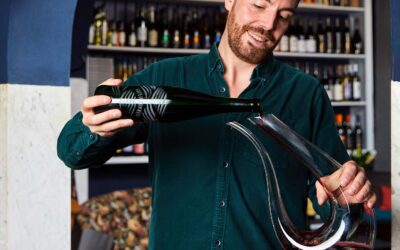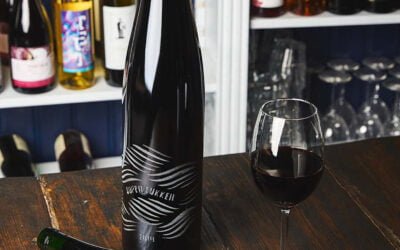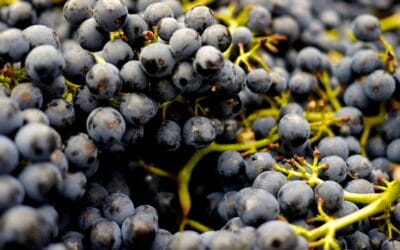What are wine aromas?
Wine aromas are the scents that are released when smelling and tasting wine. These aromas are essential because they are an important part of the wine experience. The scent of wine can vary from floral and fruity to spicy and earthy, and contributes to the complexity and character of the wine. Wine aromas not only help us to identify the wine, but they can also evoke memories and influence emotions.
Recognizing aromas in wine is a skill that helps wine tasters assess the quality and character of a wine. By consciously smelling and tasting, you gain a better understanding of the diversity and nuances that wine has to offer. This makes wine tasting at Design & Wijn not only a sensory experience, but also an educational and cultural activity.
How are wine aromas created?
Wine aromas are created by a complex interplay of several factors, including the grape variety, the fermentation process, and the ageing of the wine. The grape variety is often the primary source of aromas. For example, a Sauvignon Blanc may have aromas of grass and citrus, while a Cabernet Sauvignon often shows scents of blackcurrant and spice.
During fermentation, the sugars in the grapes are converted into alcohol, and new aromas are released. The choice of yeast culture can also influence the aroma of the wine. Finally, maturation contributes to the development of secondary aromas. For example, wine matured in oak can develop notes of vanilla or roasted nuts. These processes together make each wine unique in its scent profile.
The influence of aromas on the taste experience
The aromas of wine play a crucial role in the overall taste experience. When you taste wine, your senses of smell and taste work together to form a complete picture of the wine. Aromas can enhance or even change the taste. For example, a fruity aroma can emphasize the sweetness of the wine, while an earthy scent can increase its complexity.
In addition, specific aromas can evoke certain emotions or memories, making the wine experience more personal and meaningful. The interaction between aromas and taste is one of the reasons why wine tasting is often considered an art form. Being aware of these aromas allows you to fully appreciate the depth and richness of wine.
Practical tips for recognizing wine aromas
Recognizing wine aromas takes practice and patience. A good tip is to smell carefully before tasting the wine. Take your time to identify the different layers of aromas. A useful technique is to swirl the wine in your glass. This helps to release the aromas.
Also try to identify aromas. This can be tricky, but with practice it becomes easier. Use comparisons to everyday scents, such as flowers, herbs or fruits. By practicing these techniques regularly, you will develop your ability to recognize the subtle nuances in wine.
Common Wine Aromas and Their Meanings
There are many common wine aromas that you may encounter. Fruit aromas such as apple, pear, and citrus are typical of white wines, while red wines often have aromas of berries and cherries. Floral aromas such as rose or violets are also common, especially in aromatic wines such as Gewürztraminer.
In addition, there are spicy aromas such as pepper, cinnamon and anise, which are often found in red wines. Earthy aromas, such as truffle or wet leaves, can indicate a mature wine. Recognizing these aromas can tell you a lot about the style, origin and quality of the wine.
Why aromas vary between different wines
Aromas in wine can vary greatly depending on the grape variety, terroir, and winemaking methods. For example, the soil and climate in which the grapes grow can influence the development of specific aromas. Wines from cool climates tend to have more fresh and fruity aromas, while wines from warm regions can exhibit more complex and riper aromas.
In addition, winemakers have different techniques and traditions that influence the aromas of the wine. For example, the use of oak barrels for aging can add aromas of vanilla and caramel. These variations make wine tasting fascinating and challenging, because each wine tells a unique story through its aromas.
The Importance of Wine Tasting Training
Training your senses of smell and taste is crucial to refining your ability to recognize wine aromas. Regular participation in wine tastings in amsterdam can help you become more familiar with different aromas and flavors. This can deepen your experience and broaden your knowledge about wine.
At Design & Wijn Amsterdam we offer wine education that helps you develop your wine tasting skills. Training and experience are essential to appreciating the complexity of wine aromas. By delving into the world of wine tasting, you will discover not only the diversity of aromas, but also the rich stories that each bottle has to offer.















